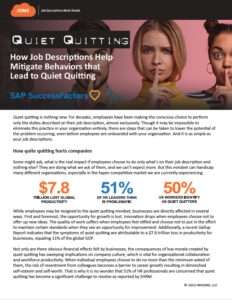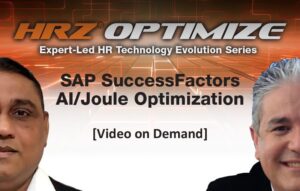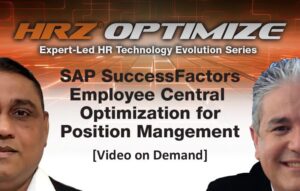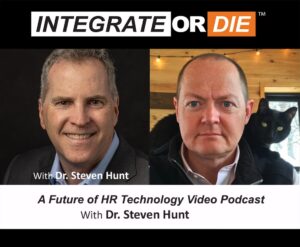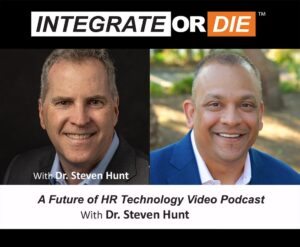
SuccessFactors Migration Tips and Tricks
Looking into migrating from SAP HCM to SAP SuccessFactors Employee Central? SuccessFactors Employee Central migrations present challenges, but migration is a worthwhile investment, as it affords a bevy of opportunities in optimizing and transforming your business.
HRIZONS®, an SAP Gold Partner and two-time SAP Pinnacle Award Winner for SAP SuccessFactors, has unrivaled expertise in migration to SAP SuccessFactors Employee Central. Some of that expertise is shared in the resource below, drawing from recent experience working with clients.
Implementation Tips for SuccessFactors Migration
- When migrating from SAP HCM to SuccessFactors Employee Central (EC), don’t try to implement or replicate your current processes in a new EC implementation. Assess all current processes and think about streamlining, optimization and consolidation of processes.
- Don’t think the system can do EVERYTHING. Learn the capabilities of EC and what you want it to do.
- Less is more. Keep the implementation design as simple as possible. Just because you can put it in the system doesn’t mean you should put it in the system. The more simple and streamlined the system is designed on the front end, the easier it will be to maintain and make future modifications and additions.
- When assigning team members to an implementation project, they should learn as much about the system as they can before the kickoff. This typically means engaging in the SAP Project Team Orientation (PTO). This knowledge will aid in system requests and design.
Making Corrections and Changes From Earlier Implementations
- Put those with the most comprehensive understanding of your future EC system on the task. Typically, this is those who are in HRIS and System Administrator roles. These individuals should have the closest connection to the business processes that will be configured in EC. They usually best know and understand the business’ requirements, what is being updated or added, and they are the ones who know what has been implemented in the past and why.
- Design with the End in Mind…Maintenance: When implementing, more is not always better. When designing the original implementation of EC, think ahead of what it will mean to add or modify functionality or add an organization.
Why Clients Move to SAP Employee Central and the Cloud
There are two main goals for migrating from legacy programs to SAP SuccessFactors Employee Central and the cloud: Unification and centralization of human resource data, organizational agility, and executives wanting to have access to all data in one system for analysis to help with decision making.
- Our EC projects often involve multiple territories and countries. In that situation, executives say they want to know how many hires they have, how many terminations, etc. Executives want access to a centralized system from which they can make timely decisions with centralized data that is immediately available.
- Clients oftentimes come to us with different HR systems in place in different countries. They want all data harmonized and migrated into one EC instance, to expedite timing and decision making.
- SAP On Premise, and many other legacy on-premise systems are being sunset, or at minimum, are no longer being invested in. The time has come where SAP is strongly recommending that customers migrate to SAP SuccessFactors Employee Central to take advantage of the many innovations and cloud benefits it offers to customers. The future is clearly cloud-based enterprise and HCM software.
Employee Central Implementation Challenges and Lessons Learned
- Integrations can be challenging. We can accomplish integrations successfully when we make sure the integration team is following the same basic methodology as the EC implementation team. The key to this success is following the team structure and the use of robust and aligned project management.
- Integrations and Third Parties: The third parties are the vendors that are being integrated with EC.
- Third parties must be aligned with the project and their roles.
- Speed and compression of timelines may be desired by an organization, but that approach may create risks if the system administrators have insufficient time to become as familiar and competent with the comprehensive capabilities of Employee Central.
- Sometimes clients do not understand the nature of Software as a Service (SaaS) as configurable rather than customizable. SAP SuccessFactors clients need to understand what requirements are able to be accommodated in the system with configuration. This requires educating the client with the system functionality and capability.
- Understanding that the integrations that worked for SAP On Premise will not work for SAP Employee Central—especially if the SAP On Premise was highly customized.
Reasons To Migrate From a Legacy System
- An overall reduction in total cost of ownership. There’s no hardware, and more tasks can be completed with system administrators instead of having to engage a consultant or HR IT staff who are dedicated to supporting the system.
- It’s about trying to get to that overall reduction in total cost of ownership and improving self-service and organizational agility. HR becomes much more empowered, and much less reliant on IT.
Let Us Help You With Your SuccessFactors Migration and More
The information provided above, which is by no means exhaustive, should help to build understanding of the challenges and benefits which stem from migrating from SAP ECC HCM to SAP SuccessFactors Employee Central. If you have a question about a SuccessFactors migration, implementation, or a related topic our experts would like to hear from you.
